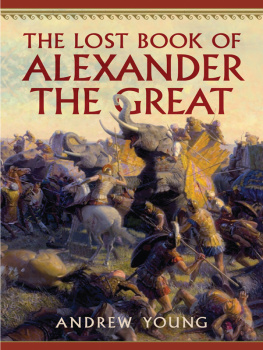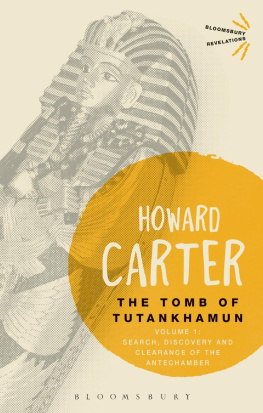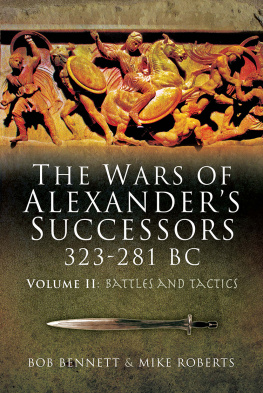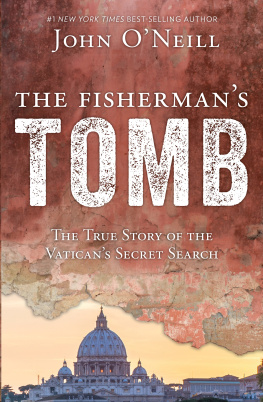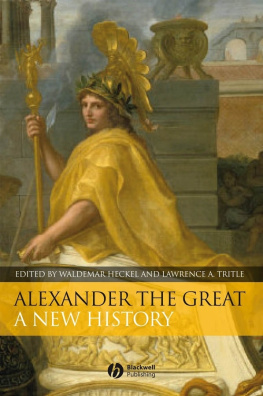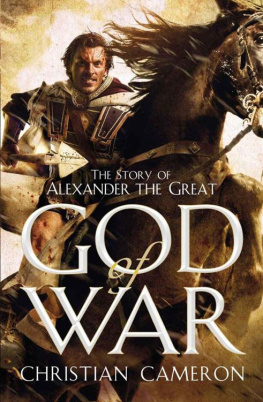


Copyright 2006 by Basic Books
Hardcover edition first published in 2006 by Basic Books,
A Member of the Perseus Books Group
Paperback edition first published in 2007 by Basic Books
All rights reserved. Printed in the United States of America. No part of this book may be reproduced in any manner whatsoever without written permission except in the case of brief quotations embodied in critical articles and reviews. For information, address Basic Books, 387 Park Avenue South, New York, NY 100168810.
Books published by Basic Books are available at special discounts for bulk purchases in the United States by corporations, institutions, and other organizations. For more information, please contact the Special Markets Department at the Perseus Books Group, 11 Cambridge Center, Cambridge MA 02142, or call (617) 252-5298 or (800) 255-1514, or e-mail .
Designed by Lisa Kreinbrink
The Library of Congress has catalogued the hardcover edition as follows: Saunders, Nicholas J.
Alexanders tomb: the two thousand year obsession to find the lost conqueror / Nicholas J. Saunders.
p. cm.
Includes bibliographical references and index.
1. Alexander, the Great, 356-323 B.C.Tomb. 2. Alexander, the Great, 356-323 B.C.Death and burial. I. Title: Two thousand year obsession to find the lost conqueror. II. Title.
DF234.2.S28 2006
938'.07092--dc22
2006000973
ISBN-13: 978-0-465-00621-2
10 9 8 7 6 5 4 3 2 1
For Alexander and Roxanne, naturally
Table of Contents
Guide
CONTENTS

July 20, 356 B.C.E. Birth of Alexander at Pella.
343340 Alexander taught by Aristotle at Mieza.
340339 Alexander regent at Pella in Philips absence.
Philip assassinated at Aegae; Alexander becomes king as Alexander III.
Alexander takes command of the invasion of Persia and crosses into Asia. Alexander and Hephaestion pay respects to Achilles and Patroclus at the heroes graves near Troy.
Battle of the river Granicus.
September 334 Alexander conquers Halicarnassus and sees the mausoleum.
November 333 Alexander defeats Persian king Darius at the battle of Issus.
JanuaryMarch 331 Alexander visits Siwa Oasis and is welcomed as Son of Ammon; founds Alexandria on Egypts Mediterranean coast.
October 1, 331 Alexander defeats Darius at the battle of Gaugamela.
OctoberDecember 331 Alexander marches south to Babylon, Susa, and Persepolis. Visits the tomb of Cyrus the Great at Pasargadae.
Spring 329 Alexander crosses the Hindu Kush to Bactra.
Spring 327 Capture of the Sogdian rock; Alexander marries Roxanne.
SeptemberOctober 325 Alexander marches through the Gedrosian desert.
October 324 Alexanders close friend Hephaestion dies in Ecbatana, Alexander orders the body mummified.
AprilMay 323 Alexander oversees Hephaestions funeral in Babylon.
June 10, 323 Alexander dies in Babylon at age 33.
323321 Alexanders mummified remains lay in state in Babylon; Alexanders hearse prepared.
Alexanders hearse hijacked by Ptolemy near Damascus, taken to Memphis and buried.
Spring 320 Perdiccas invades Egypt to retrieve Alexanders body, is defeated by Ptolemy and murdered by his own men.
Olympias murders Philip III Arrhidaios.
Cassander has Olympias stoned to death.
Polyperchon murders Alexanders mistress Barsine and their illegitimate son Heracles on Cassanders advice; Cassander murders Alexanders wife Roxanne and their legitimate son, Alexander IV, at Amphipolis.
Ptolemy is crowned king-pharaoh of Egypt.
298283 Likely years for Ptolemy moving Alexanders body from Memphis to Alexandria and burying it in the first tomb.
Ptolemy dies, and his son Ptolemy II Philadelphus is crowned king-pharaoh.
275274 Ptolemaia festival in Alexandria in which the Grand Procession of Ptolemy Philadelphus was a part.
Alexander reburied in a new (second) tomb within the Soma funerary park built by Ptolemy IV Philopater.
8990 Ptolemy X melts down Alexanders golden sarcophagus and replaces it with one of glass or crystal.
Julius Caesar visits Alexanders tomb.
Cleopatra VII takes gold from Alexanders tomb to pay for continuing fight against Octavian.
Alexandria conquered by Octavian, who visits Alexanders tomb.
130 C.E. Roman emperor Hadrian visits Alexandria, and probably Alexanders tomb.
Roman emperor Septimus Severus visits Alexandria and seals up Alexanders tomb, possibly with secret books inside.
Roman emperor Caracalla visits and removes items from Alexanders tomb; builds wall around the Brucheum.
297298 Roman emperor Diocletian besieges Alexandria, causes destruction to the Brucheum district, and erects his eponymous column.
Roman emperor Constantine I (the Great) proclaims Christianity the official religion of the empire.
Bishop Ossius visits Alexandria; Council of Nicaea; Bishop Makarios discovers the tomb of Christ in Jerusalem.
360363 Alexandrias Bishop Georgias murdered after announcing he might destroy the citys temple to the Genius (identified possibly as Alexanders tomb).
Earthquake and tsunami damage Alexandria.
390391 Libanius writes letter to the emperor possibly inferring Alexanders body on display in Alexandria.
Christian riots in Alexandria destroy the Serapeum and possibly also Alexanders tomb.
John Chrysostom asks where is Alexanders tomb and does anyone know on what day Alexander died.
Alexandria surrendered to Muslim Arab general Amr-ibn-al-As.
Alexandria shrinks behind new city walls built by Sultan Ahmed-Ibn-Tulun.
15151517 Arab traveler Leo Africanus visits Alexandria and describes the greenstone sarcophagus in the Attarine Mosque.
1573 Map of Alexandria by G. Braun and F. Hogenberg published in Cologne.
16701682 Arab traveler Evliya Celebi visits Alexandria and describes the greenstone sarcophagus in the Attarine Mosque, observing its hieroglyphic decoration and hinting at its use as a basin for ritual ablutions.
1798 The French savant Dominique Vivant Denon travels to Egypt with Napoleon, finds and removes the greenstone sarcophagus from the Attarine Mosque.
1801 English scholar and traveler Edward Daniel Clarke retrieves the greenstone sarcophagus (which he identifies as Alexanders tomb) for the British. Sarcophagus taken to the British Museum in London.
1805 Clarke publishes his book, The Tomb of Alexander.
1822 Jean-Francois Champollion announces his decipherment of Egyptian hieroglyphs and soon afterward the Alexander Sarcophagus in the British Museum is realized to belong to the Egyptian pharaoh Nectanebo II.
1850 In Alexandria, Greek-born dragoman, Ambroise Schilizzi, announces discovery of Alexanders mummy and tomb in the depths of the Nabi Daniel Mosque.
1851 French archaeologist Auguste Mariette begins excavating at Memphis-Saqqara, and discovers the Serapeum and the Philosophers Circle of Greek statues.
Next page

